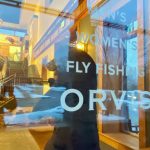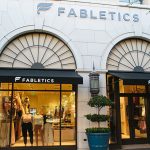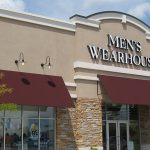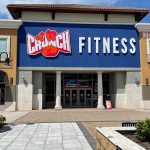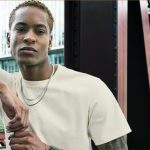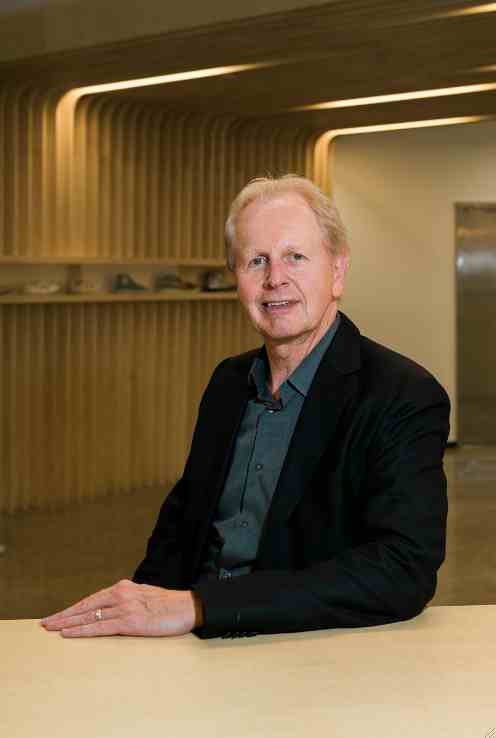 On Thursday evening, Asics America hosted a party to celebrate the grand opening of its splashy new headquarters in Irvine, CA.
On Thursday evening, Asics America hosted a party to celebrate the grand opening of its splashy new headquarters in Irvine, CA.
The campus comprises about 120,000 square feet with the latest in workstation technology designed to support interaction and collaboration among employees and ultimately innovation, recruitment and productivity. It also includes a state-of-the-art Sports Performance Center with a fitness center, gymnasium, basketball court, batting cage, volleyball courts, wrestling mats and bleacher seating to support its sponsored-athletes and inspire its employees.
But the event, which included a brief speech from Motoi Oyama, president Asics Corp., was just as much a testament to Asics America’s recent success. The region’s sales have doubled over the last five years, to $1.1 billion in 2014, beating its goal of reaching $1 billion by 2015 by one year. With its employee count growing exponentially over that time, Asics America was growing out of its old digs.
Some of the highlights from 2014 included an increase of 14.9 percent in sales and 20.1 percent in operating profits, the third year in a row Asics America has shown sustained growth and profitability.
Running footwear, its core category, grew 11.7 percent in 2014. Newer categories such as training, volleyball and tennis are also making meaningful contributions, seeing healthy double-digit year-over-year gains. Its lifestyle footwear category, which includes Onitsuka Tiger, grew 48 percent. Apparel and accessories continued to exceed expectations and surpassed projections by double and triple digits
Sports Executive Weekly sat down with Kevin Wulff, who has been Asics America’s president and CEO since August 2010, to discuss Asics America’s new home and renewed momentum.
What does this new campus mean to Asics America? It means that we are now a player to be reckoned with. Our employees deserve an environment that takes them to higher heights of creativity and communication. But we want to keep growing. We’re really committed to being a major player in this industry.
What does it say to outsiders? It certainly helps define us as more of multi-sport brand, particularly with the training center. We’re able to train athletes for so many different sports and the training center just really inspires people around sports every day. We also gain all the benefits of testing elites athletes in our product and just great photography. But it shows that we are a multisport, not just a running brand.
What’s been the key to Asics accelerated growth over the last five years? It’s a lot of same things we always do. But we’ve just really developed a strategic framework which we never had before. We really hunkered down to really try to focus and prioritize on what we felt we wanted to own and what we felt we wanted to probe to learn what might be our potentially opportunities down the road. And we really focused on running from top the bottom not just performance, but on Vis-Tech, lightweight as well as other areas as kids. We’ve also always been known as a product centric company but we’ve become a little-more marketing driven and launched some really big campaigns.
Asics running business remains healthy, growing double-digits last year. But Brooks becoming the lead brand in the run specialty channel keeps coming up. Has your approach to run changed? Our goal in run specialty was never to be the largest. It’s always been to be the best. So there’s some surveys where we’re number one, in some we’re number two. But to us it doesn’t really matter. It’s about being the best. We’ve got a lot of new products that we’ll be launching soon that will really be focused on running specialty. At the Asics LA Marathon, we’ve got a large group of our Gold Accounts attending, getting their insights, building those relationships and planning together. So if we’re good or great, the growth always comes. But the big thing with us in running was we really doubled our commitment about four or five years ago to good service the ability to deliver on time and accurate as well as to fill-in. We also now have a state- of-the-art distribution center that’s completely automated. So we fixed a lot of those operational things that frustrated our Gold Accounts especially.
How is the brand doing in run specialty? We’ve gained some market share and we’re excited about it. I think some of the new products we’ve come out have created some energy. Our running brand campaign, “It’s A Big World. Go Run It,” has seen an amazing response. We think as one of the running leaders or the running leader, part of our responsibility is to create that energy, to create that emotional connection to the sport of running and to the running enthusiast. So doing a running-specific campaign should bring some motivation along with it and should be good for the running category as a whole.
Can you talk about your recent strong growth in training? It was definitely underserved and we put more focus on it. Running is normally a part of someone’s training. It makes training that much easier. You see many fitness club members already wearing our shoes so it’s a nice complement to running. Training is also very segmented so there’s opportunities across every type of fitness studio training, yoga, sports training for a particular sport, CrossFit, etc. So we’ve got a great lineup of product that aligns to training very well.
Can you discuss your progress in apparel? We’ve come a long way. We hit $100 million in the Americas in the category this past year, including a 34 percent gain year-over-year. We’ve got a new head of apparel who’s doing a great job, and bringing new energy and a new design direction. A lot of people only know us as a footwear brand but we got a lot of opportunity and runway ahead of us in apparel.
What’s driving tennis? Tennis is exploding for us. We went from nowhere to number two or three depending on the survey this past December. We’re now number one in tennis specialty and tennis e-commerce. We’ve got really good athletes but we’ve been the top men’s and women’s tennis shoe over the last four years in Tennis Magazine’s annual buyers guide. That’s indicative of the quality of all the performance attributes we built into this product.
The lifestyle business is also undergoing resurgence. We’re going to be growing another 40 percent this year. We just relaunched the AT or Asics Tiger collection and if you read some of the sneaker blogs, we’re the hottest thing going. We’ve kept distribution very narrow so we’re keeping our brands at the top of the pyramid and they’re getting to the point where they’re becoming very meaningful.
Asics America opened 11 stores last year, including flagship in Times Square. Why the expansion? We’d gotten into the factory outlets as most of the brands have. It’s a great way to liquidate product but also a great way to tell our story in a proper manner too, even though the product is discounted to some degree. And now we’ve got 12 inline stores also and they’re just great laboratories to learn for us. We’re also selling a tremendous amount of apparel in those stores. So it balances out that portfolio and consumers know that we’re more than just running footwear. We’re telling stories running, training and tennis and so on and so forth, and are able to tell our story with other categories like apparel and accessories. So it’s exciting.
Any more openings planned? We don’t have any currently planned. We’re going to try to keep what we have, get better at it and then look at expand some more.
What do you make of the consolidation going on in run specialty with Finish Line’s Run Specialty Group and others? Overall, the evolution is really done for a reason and I think good retailers will always be good retailers. No matter what their size is or the amount of stores, they’re going to build their traffic base, their conversions, and they’re going to be fine. I think that a lot of consolidation is really about providing that efficiency, the knowledge and best practices to help stores compete today’s environment. The good retailers tend to come out of it in a much stronger position.
What’s the next category for Asics? We can’t talk about it yet. We’ll try to announce something soon. But we’re having a whole event around the launch so we can’t talk about it yet. We’re just going to expand our categories and do things that we’ve done in the past and we’ve done them well. We’ll bring some new innovation and technologies we think will be special. And just like we’ve always done, we’ll start at the grassroots level, getting players involved at a pretty young age and give us some feedback and just kind of grow from there.
Does Asics need a new category to keep its growth momentum? We have a lot of opportunity with our other newer categories and in other segments of running such as the Vis-Tech segment, which is for a younger consumer, and the Active Running segment, which is under $100 and lightweight. In kids running we’re just scratching the surface. We’re growing like crazy. So just in running, there’s still a lot we can do.





